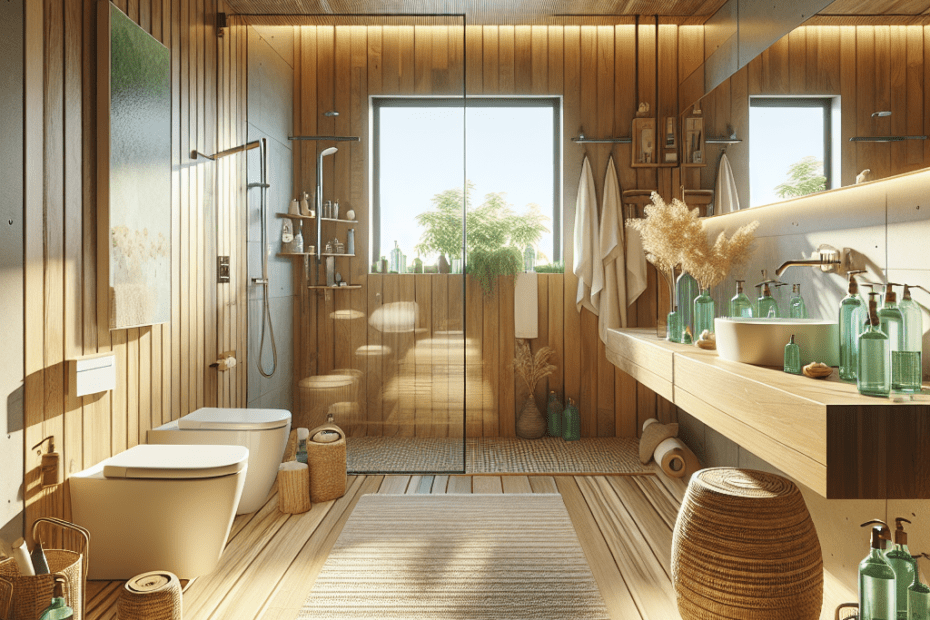The Essentials of Eco-Friendly Bathroom Design
In recent times, more people are becoming concerned about the environment and are looking for ways to incorporate eco-friendly practices into their daily lives. One popular trend is eco-friendly bathroom design, blending sustainability with personal style. With an increased focus on conserving water and energy, they are discovering that designing an environmentally conscious bathroom is not only beneficial for the planet but can also lead to significant cost savings.
According to the Environmental Protection Agency (EPA), bathrooms are responsible for about 50% of indoor water use in an average home. Therefore, transforming a bathroom into an eco-friendly oasis can have a really positive environmental impact.
Understanding the Importance of Water Conservation
Water conservation plays a key role in eco-friendly bathroom design. Modern, efficient fixtures can significantly reduce water usage. They often replace old, inefficient toilets with dual-flush systems that allow occupants to select the appropriate water level for each use, saving up to 67% more water than traditional toilets (source: WaterSense). Additionally, installing low-flow showerheads, which limit water flow to less than 2.5 gallons per minute, can help reduce water waste during showers without sacrificing comfort.
Incorporating Sustainable Materials
They are moving towards the use of sustainable materials in their bathroom designs by selecting items made from renewable sources. Bamboo, a rapidly growing resource, is a fantastic option for flooring and cabinetry, providing durability and a sleek, modern aesthetic. Recycled glass tiles for walls and countertops add an artistic touch to the space while being eco-conscious because the production of recycled glass uses 50% less energy than producing new glass (source: Glass Packaging Institute).
Energy-Efficient Lighting Options
A bathroom cannot be truly eco-friendly without consideration of energy consumption. They often opt for LED lighting as it uses at least 75% less energy and lasts up to 25 times longer than incandescent bulbs (source: Department of Energy). LED lights are now available in a variety of styles and temperatures, making it easy to achieve the desired ambiance without compromising on energy efficiency.
Improving Indoor Air Quality
Ensuring good indoor air quality is crucial in a bathroom. They can achieve this by using organic or low-VOC (volatile organic compound) paints, which reduce the number of harmful chemicals released into the air. Proper ventilation, using ENERGY STAR-rated exhaust fans, can also help maintain a healthy environment by removing moisture and pollutants effectively. An efficient exhaust fan can perform the work with about 60% less energy than traditional fans (source: ENERGY STAR).
Maximizing Natural Light
Utilizing natural light is a simple yet effective strategy to enhance the eco-friendliness of a bathroom. Natural light reduces reliance on artificial lighting, lowers energy usage, and creates a calming and vibrant atmosphere. Implementing larger windows, skylights, or sun tunnels can flood the space with natural light, and strategically placed mirrors can help distribute that light more evenly across the room.
Eco-Friendly Bathroom Accessories
Every detail counts when it comes to eco-friendly bathroom design. They often choose towels, mats, and shower curtains made from organic cotton or other sustainable fibers. In addition, simple changes like using biodegradable soaps and shampoos can help further minimize environmental impact.
| Feature | Eco-Friendly Option | Benefit |
|---|---|---|
| Toilets | Dual-Flush Systems | 67% water savings |
| Showerheads | Low-Flow Models | Less than 2.5 gallons per minute |
| Lighting | LED Bulbs | 75% less energy, long lifespan |
Key Takeaways
- Eco-friendly bathroom design integrates water conservation, sustainable materials, and energy-efficient lighting.
- Utilizing dual-flush toilets and low-flow showerheads dramatically reduces water usage.
- Adopting LED bulbs and maximizing natural light are essential steps towards energy efficiency.
- Emphasizing indoor air quality with low-VOC paints and efficient ventilation is vital.
- Choosing eco-friendly accessories ensures that every detail contributes to a sustainable space.
FAQ
-
Why is water conservation important in bathroom design?
Water conservation helps reduce utility bills and lowers overall water consumption, which is crucial given that bathrooms account for about 50% of a home’s indoor water use.
-
What are some sustainable materials ideal for bathroom designs?
Sustainable materials include bamboo, recycled glass tiles, and organic cotton, all of which are eco-friendly choices for flooring, walls, and accessories.
-
How do LED lights contribute to eco-friendly bathroom design?
LED lights are energy-efficient, using 75% less energy than traditional bulbs, and have a longer lifespan, reducing the need for frequent replacements.
-
What role does ventilation play in eco-friendly bathrooms?
Proper ventilation with efficient exhaust fans ensures good air quality by removing moisture and pollutants, reducing energy use compared to conventional fans.
-
How can natural light be maximized in a bathroom?
They can maximize natural light through larger windows, skylights, sun tunnels, and reflective surfaces like mirrors to spread the light throughout the space.
